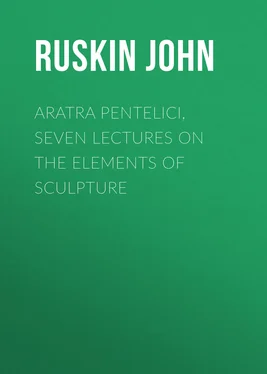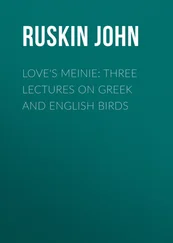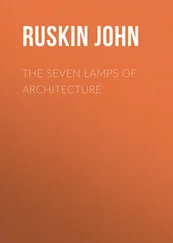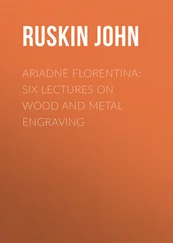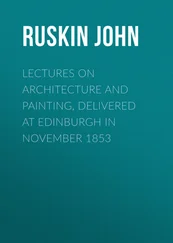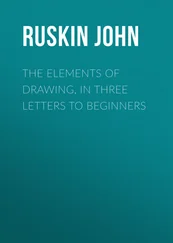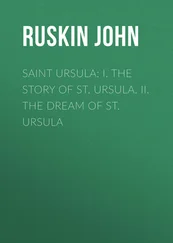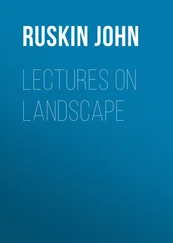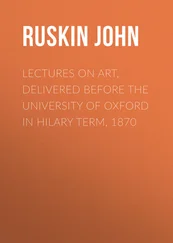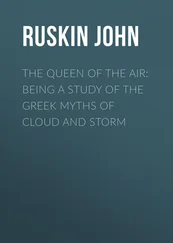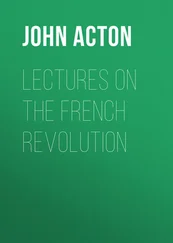John Ruskin - Aratra Pentelici, Seven Lectures on the Elements of Sculpture
Здесь есть возможность читать онлайн «John Ruskin - Aratra Pentelici, Seven Lectures on the Elements of Sculpture» — ознакомительный отрывок электронной книги совершенно бесплатно, а после прочтения отрывка купить полную версию. В некоторых случаях можно слушать аудио, скачать через торрент в формате fb2 и присутствует краткое содержание. Жанр: foreign_antique, foreign_home, literature_19, visual_arts, на английском языке. Описание произведения, (предисловие) а так же отзывы посетителей доступны на портале библиотеки ЛибКат.
- Название:Aratra Pentelici, Seven Lectures on the Elements of Sculpture
- Автор:
- Жанр:
- Год:неизвестен
- ISBN:нет данных
- Рейтинг книги:5 / 5. Голосов: 1
-
Избранное:Добавить в избранное
- Отзывы:
-
Ваша оценка:
- 100
- 1
- 2
- 3
- 4
- 5
Aratra Pentelici, Seven Lectures on the Elements of Sculpture: краткое содержание, описание и аннотация
Предлагаем к чтению аннотацию, описание, краткое содержание или предисловие (зависит от того, что написал сам автор книги «Aratra Pentelici, Seven Lectures on the Elements of Sculpture»). Если вы не нашли необходимую информацию о книге — напишите в комментариях, мы постараемся отыскать её.
Aratra Pentelici, Seven Lectures on the Elements of Sculpture — читать онлайн ознакомительный отрывок
Ниже представлен текст книги, разбитый по страницам. Система сохранения места последней прочитанной страницы, позволяет с удобством читать онлайн бесплатно книгу «Aratra Pentelici, Seven Lectures on the Elements of Sculpture», без необходимости каждый раз заново искать на чём Вы остановились. Поставьте закладку, и сможете в любой момент перейти на страницу, на которой закончили чтение.
Интервал:
Закладка:
I am aware of no statue of Christ, nor of any apostle of Christ, nor of any scene related in the New Testament, produced by us within the last three hundred years, which has possessed even superficial merit enough to attract public attention.
Whereas the steadily immoral effect of the formative art which we learn, more or less apishly, from the French schools, and employ, but too gladly, in manufacturing articles for the amusement of the luxurious classes, must be ranked as one of the chief instruments used by joyful fiends and angry fates for the ruin of our civilization.
If, after I have set before you the nature and principles of true sculpture, in Athens, Pisa, and Florence, you consider these facts,—(which you will then at once recognize as such),—you will find that they absolutely justify my assertion that the state of sculpture in modern England, as compared with that of the great Ancients, is literally one of corrupt and dishonorable death, as opposed to bright and fameful life.
62. And now, will you bear with me while I tell you finally why this is so?
The cause with which you are personally concerned is your own frivolity; though essentially this is not your fault, but that of the system of your early training. But the fact remains the same, that here, in Oxford, you, a chosen body of English youth, in nowise care for the history of your country, for its present dangers, or its present duties. You still, like children of seven or eight years old, are interested only in bats, balls, and oars: nay, including with you the students of Germany and France, it is certain that the general body of modern European youth have their minds occupied more seriously by the sculpture and painting of the bowls of their tobacco-pipes, than by all the divinest workmanship and passionate imagination of Greece, Rome, and Mediæval Christendom.
63. But the elementary causes, both of this frivolity in you, and of worse than frivolity in older persons, are the two forms of deadly Idolatry which are now all but universal in England.
The first of these is the worship of the Eidolon, or Fantasm of Wealth; worship of which you will find the nature partly examined in the thirty-seventh paragraph of my 'Munera Pulveris'; but which is briefly to be defined as the servile apprehension of an active power in Money, and the submission to it as the God of our life.
Конец ознакомительного фрагмента.
Текст предоставлен ООО «ЛитРес».
Прочитайте эту книгу целиком, купив полную легальную версию на ЛитРес.
Безопасно оплатить книгу можно банковской картой Visa, MasterCard, Maestro, со счета мобильного телефона, с платежного терминала, в салоне МТС или Связной, через PayPal, WebMoney, Яндекс.Деньги, QIWI Кошелек, бонусными картами или другим удобным Вам способом.
1
Photography cannot exhibit the character of large and finished sculpture; but its audacity of shadow is in perfect harmony with the more roughly picturesque treatment necessary in coins. For the rendering of all such frank relief, and for the better explanation of forms disturbed by the luster of metal or polished stone, the method employed in the plates of this volume will be found, I believe, satisfactory. Casts are first taken from the coins, in white plaster; these are photographed, and the photograph printed by the autotype process. Plate XII. is exceptional, being a pure mezzotint engraving of the old school, excellently carried through by my assistant, Mr. Allen, who was taught, as a personal favor to myself, by my friend, and Turner's fellow-worker, Thomas Lupton. Plate IV. was intended to be a photograph from the superb vase in the British Museum, No. 564 in Mr. Newton's Catalogue; but its variety of color defied photography, and after the sheets had gone to press I was compelled to reduce Le Normand's plate of it, which is unsatisfactory, but answers my immediate purpose.
The enlarged photographs for use in the Lecture Room were made for me with most successful skill by Sergeant Spackman, of South Kensington; and the help throughout rendered to me by Mr. Burgess is acknowledged in the course of the Lectures; though with thanks which must remain inadequate lest they should become tedious; for Mr. Burgess drew the subjects of Plates III., X., and XIII.; and drew and engraved every wood-cut in the book.
2
It is included in this edition. See Lecture VII., pp. 132-158.
3
Lectures on Art, 1870.
4
A pamphlet by the Earl of Southesk, 'Britain's Art Paradise' (Edmonston and Douglas, Edinburgh), contains an entirely admirable criticism of the most faultful pictures of the 1871 Exhibition. It is to be regretted that Lord Southesk speaks only to condemn; but indeed, in my own three days' review of the rooms, I found nothing deserving of notice otherwise, except Mr. Hook's always pleasant sketches from fisher-life, and Mr. Pettie's graceful and powerful, though too slightly painted, study from Henry IV.
5
I had a real plowshare on my lecture-table; but it would interrupt the drift of the statements in the text too long if I attempted here to illustrate by figures the relation of the colter to the share, and of the hard to the soft pieces of metal in the share itself.
6
A sphere of rock crystal, cut in Japan, enough imaginable by the reader, without a figure.
7
One of William Hunt's peaches; not, I am afraid, imaginable altogether, but still less representable by figure.
8
The crystal ball above mentioned.
9
All grandest effects in moldings may be, and for the most part have been, obtained by rolls and cavettos of circular (segmental) section. More refined sections, as that of the fluting of a Doric shaft, are only of use near the eye and in beautiful stone; and the pursuit of them was one of the many errors of later Gothic. The statement in the text that the moldings, even of best time, "have no real relation to construction," is scarcely strong enough: they in fact contend with, and deny the construction, their principal purpose seeming to be the concealment of the joints of the voussoirs.
10
Some of the most precious work done for me by my assistant, Mr. Burgess, during the course of these Lectures, consisted in making enlarged drawings from portions of photographs. Plate III. is engraved from a drawing of his, enlarged from the original photograph of which Plate I. is a reduction.
11
Glance forward at once to § 75, read it, and return to this.
12
There is a primary and vulgar sense of 'exhibited' in Lucian's mind; but the higher meaning is involved in it.
13
In the Greek, 'ambrosial.' Recollect always that ambrosia, as food of gods, is the continual restorer of strength; that all food is ambrosial when it nourishes, and that the night is called 'ambrosial' because it restores strength to the soul through its peace, as, in the 23d Psalm, the stillness of waters.
14
I have italicized this final promise of blessedness, given by the noble Spirit of Workmanship. Compare Carlyle's fifth Latter-day Pamphlet, throughout; but especially pp. 12-14, in the first edition.
Читать дальшеИнтервал:
Закладка:
Похожие книги на «Aratra Pentelici, Seven Lectures on the Elements of Sculpture»
Представляем Вашему вниманию похожие книги на «Aratra Pentelici, Seven Lectures on the Elements of Sculpture» списком для выбора. Мы отобрали схожую по названию и смыслу литературу в надежде предоставить читателям больше вариантов отыскать новые, интересные, ещё непрочитанные произведения.
Обсуждение, отзывы о книге «Aratra Pentelici, Seven Lectures on the Elements of Sculpture» и просто собственные мнения читателей. Оставьте ваши комментарии, напишите, что Вы думаете о произведении, его смысле или главных героях. Укажите что конкретно понравилось, а что нет, и почему Вы так считаете.
